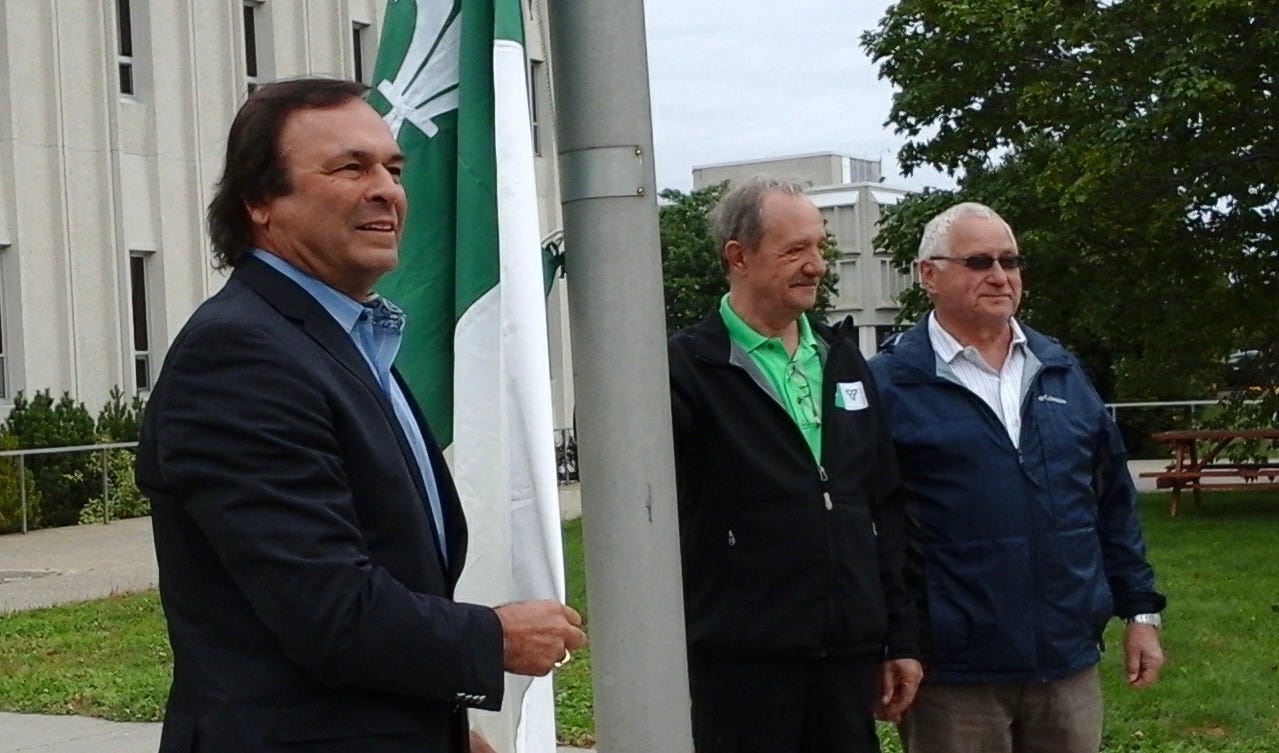The Toronto Star: Removing Franco-Ontario flag tries to resolve one injustice with another
The municipality of Greenstone’s flag flap has sparked a critical dialogue about identity, recognition, and the pursuit of nation-to-nation reconciliation for French speakers in Ontario
Read the short version of this text in The Toronto Star

It is an emblem that has rallied generations of Franco-Ontarians.
The fruit of youth, folly and pluck, the Franco-Ontarian flag was flown for the first time in 1975, created by an intrepid band of young men, which included Michel Dupuis, Gaétan Gervais, Donald Obonsawin, Normand Rainville, and my father, Yves Tassé.
It was borne of a tumultuous, hopeful decade of francophone resistance and community-building in Ontario, an era where francophones sought to “speak themselves” as a society and as full citizens of this province.
But in a “chilling setback” last week for Franco-Ontarians, the municipality of Greenstone near Thunder Bay voted to permanently pull down the Franco-Ontarian flag from city masts.
The policy aims to demonstrate equality and reconciliation, said Greenstone Mayor James McPherson, intended to move reconciliation with the six local First Nations communities forward and ensure that “all groups are recognized equally.”
As we say in Franco-Ontario: ouate de phoque.
“It would seem that the path to reconciliation necessarily involves denying Franco-Ontarian identity,” writes Mehdi Mehenni of Le Voyageur. “This is tantamount to repairing one injustice with another.”
Certainly, reconciliation must progress in both of Canada’s official languages wherever these tongues are spoken. And it must acknowledge – not erase – the existence of Indigenous Franco-Ontarians. Like Donald Obonsawin, one of the fathers of the Franco-Ontarian flag, who is also from the Abenaki nation in Quebec.
In an interview with Radio Canada, historian Serge Dupuis explained that the city of Greenstone could fly the Ontarian flag under the Canadian flag, thereby freeing up a mast for the municipal and Franco-Ontarian flags, which had previously flown together.
“We give the impression that the Ontario flag is a unifying symbol,” continues Dupuis. “However, when you look at the history of this flag and the symbols it contains, it's still a colonial flag; we're trying to recover the British symbol of the Union Jack."
If we felt the need to create Franco-Ontarian and Indigenous flags, he adds, it is because we did not feel sufficiently represented.
Oui.
While Mayor James McPherson initially contended that the move aimed to foster equality and reconciliation with local First Nations communities, it erased the Franco-Ontarian experience and our responsibility for reconciliation.
So too does the absence of a fourth mast – one that might include symbols chosen in close consultation with the six First Nations of the region, the community on whose sacred lands we live.
Greenstone has since opened the door to a conversation – something they should have done from the beginning. The city’s Franco-Ontarians have also mobilized – consulting with local First Nations communities, flying the flag at francophone residences and businesses, and organizing a deputation to be heard at city council later this month.
The city’s decision highlights the need for a nuanced, consultative and inclusive approach to flags – one that respects and celebrates the unique histories, diasporas and cultures Franco-Ontarians bring to bear on the fabric of our province.
Reconciliation requires inclusion. And consultation. By engaging Franco-Ontarians and the six local First Nations, Greenstone could lead by example. And spark change for reconciliation.




